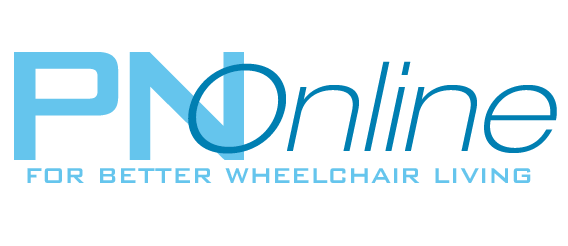The harsh reality of accessible rides
My wife and I were in our so-called “situation room” scheming a plan that could determine whether or not we survive until September. We were living every parent’s nightmare of trying to find something to keep our kids busy during their summer break from school.
Our daughters, ages 5 and 6, hate the idea of summer camps and prefer to hang out with us all day. So, in a bid of desperation, we began scrolling through countless websites hoping for a miracle.
Considering we live across the bay from San Diego, we discovered summer passes for places like SeaWorld and the San Diego Zoo and its nearby Safari Park, and there were plenty of museums throughout the city. However, Legoland offered a deal we couldn’t refuse.
The theme park markets to families with children, and most attractions are geared toward kids under age 12. Attractions consist mostly of outdoor flat rides, interactive play structures and splash pads, as well as designated stations for playing with Lego bricks.
What also caught our eye was the fact that Legoland claims most attractions are accessible to guests with disabilities, and it offers a disabled access guide, which includes a map to assist us in navigating the property in a wheelchair. All things considered, we went ahead and bought summer passes for the entire family.
A few days later, we surprised the kids with a trip to Legoland. They couldn’t have been more excited when we arrived at the park entrance and were greeted by a life-size Lego character appearing to be in a wheelchair — just like their dad. With that, my wife and I were convinced we made the right decision and were looking forward to a day of fun and a summer of shared experiences.
Unfortunately, that all changed when we tried to get on the first ride.
Sure, there were plenty of signs directing us to the accessible entrance, but that’s where the accessibility ended. Without going into detail, you’ll have to trust me when I say there was no way I was getting in that boat.
Joining me in my frustration was my oldest daughter. Understandably, she was disappointed that I couldn’t be a part of the fun, yet she looked forward to the ride with her mom and little sister.
As I sat on the dock and watched my family have fun without me, I was reminded of something a friend once told me. He said, “The key to happiness is low expectations and good Wi-Fi.” So, I took a few pictures, responded to some emails and ate my kids’ Go-Gurt.
Sure, as an adult, I’m too old to enjoy the rides at Legoland. But as a parent, I felt misled by their marketing materials that claim their theme park provided a welcoming, inclusive and accessible experience for all guests.
Advocates have been working with theme park operators for decades with mixed results. I recently found a letter in my office at PVA Publications from the legendary Walt Disney addressed to James Dwyer at the then-named California Paralyzed Veterans Association. In the 1957 letter, Disney thanks Dwyer for raising issues relating to accessibility at his first of many Disney theme parks.
Today, rides at theme parks generally must be compliant with the Americans with Disabilities Act (ADA), particularly for new rides and those that have been recently altered. The ADA ensures accessibility for individuals with disabilities, including dads using wheelchairs, by requiring features such as wheelchair-accessible routes, loading and unloading areas and at least one accessible seat or transfer device per ride.
However, theme parks have their own interpretations of the law, and enforcement of policies regarding people with disabilities vary from park to park. For example, a paralyzed veteran who relies on leg braces for walking told me he wasn’t allowed to get on a ride at Kings Dominion near Richmond, Va., because park staff thought his braces might fall off and injure other guests.
Another paralyzed veteran told me he bought a pair of weekend passes at Busch Gardens in Tampa, Fla., for himself and his son, only to be informed upon arrival that the theme park’s policies didn’t allow him to sit on a cushion while on their rides.
Yet, at Disneyland, its policy allows for cushions on 30 of its 52 attractions. Fortunately, Busch Gardens offered a refund, but the father-and-son vacation ended in great disappointment.
I can understand the issues these theme parks raise when it comes to safety because there have been several serious injuries to riders with disabilities, but whatever happened to reasonable accommodations? It can be done.
In 2010, Morgan’s Wonderland in San Antonio became the world’s first theme park of its kind. Guided by its mission of inclusion, the park brings together guests of all ages and all abilities through the power of inclusive play.
The park then expanded its attractions in 2017 to include Morgan’s Inspiration Island water park, which was named one of Time magazine’s “World’s Greatest Places” in 2018. That same year, Paralyzed Veterans of America presented its Barrier-Free America Award to Luna Middleman Architects for their design of Morgan’s Wonderland and Inspiration Island.
We’ve come a long way since Disney opened Disneyland 70 years ago, and his theme parks remain the most popular worldwide. Recently, the Walt Disney Company announced plans to open another theme park in Abu Dhabi, United Arab Emirates. While there’s no ADA in Abu Dhabi, there are building codes that include accessibility standards, thanks in part to the United Nations’ Convention on the Rights of Persons with Disabilities.
Disney’s theme parks are recognized as trendsetters when it comes to wheelchair accessibility for kids as well as their parents, so I guess we’ll just have to wait and see what they have to say on Yelp.
In the meantime, I’ll consider going back to Legoland, but with tempered expectations. After all, I already paid $600 for the passes, and we still have another two months before the kids go back to school.
As always, email me at al@pvamag.com and share your thoughts.



